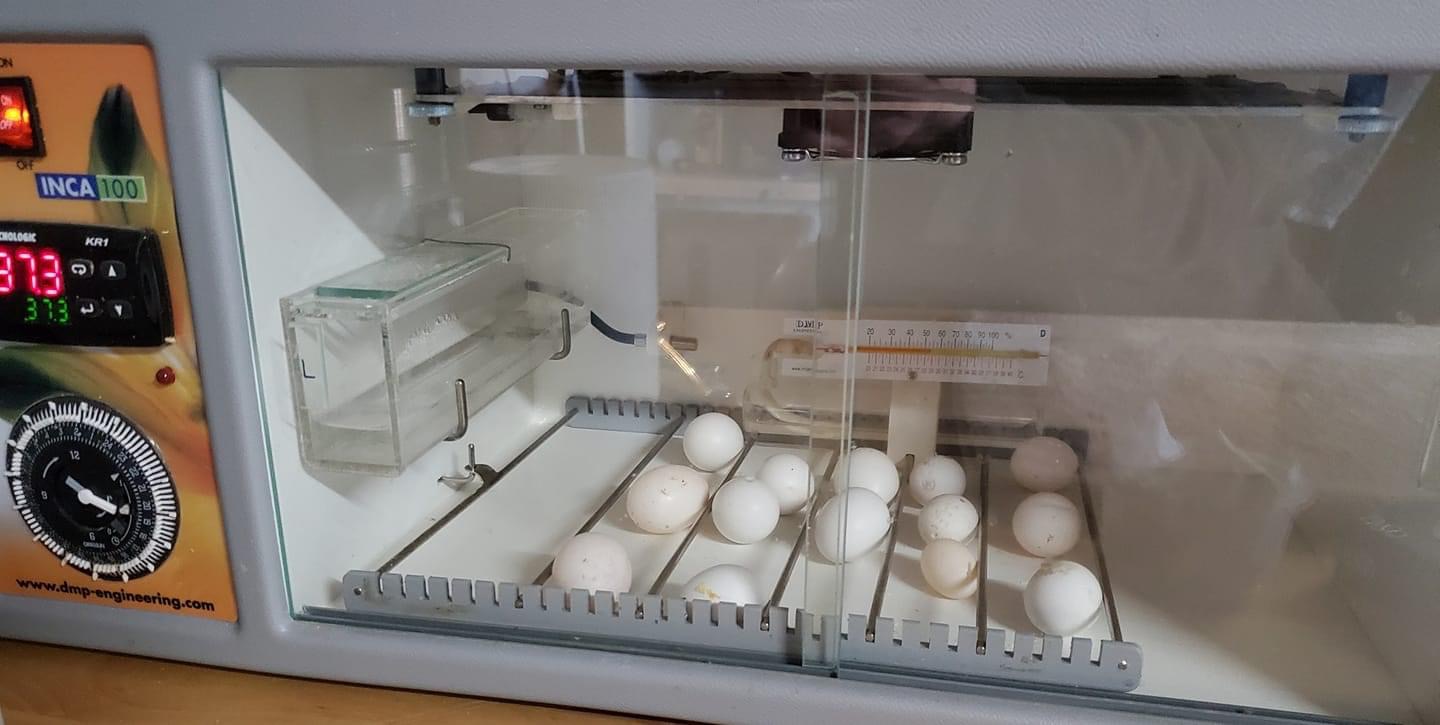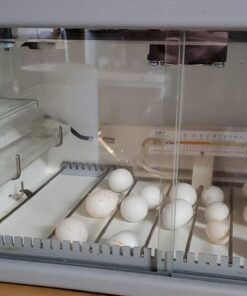Yellow-tailed black cockatoo parrot eggs for sale
$75.00
Yellow-tailed black cockatoos (Calyptorhynchus funereus) are large, striking birds native to southeastern Australia. They are known for their distinctive black plumage and yellow tail feathers. Here’s some detailed information about their eggs and breeding behavior:
Breeding Season
The breeding season for yellow-tailed black cockatoos generally occurs from late winter to early summer, typically from August to January.
Nesting
– Nesting Sites: They prefer to nest in large, hollow trees, often Eucalyptus species, where the nest is situated high above the ground.
– Nesting Material: The nest is lined with wood dust and other soft materials to provide cushioning for the eggs.
Eggs
– Number of Eggs:The female typically lays 1 to 2 eggs per breeding season.
– Egg Appearance:The eggs are white and oval-shaped, measuring about 46-52 mm in length and 34-38 mm in width.
Incubation
– Incubation Period: The incubation period lasts about 28 to 30 days.
– Parental Care: The female primarily incubates the eggs, while the male provides food and protection.
Chicks
– Hatching: The chicks hatch asynchronously, meaning the first egg laid hatches first, giving that chick a head start.
– Fledging: Chicks usually fledge about 3 months after hatching but remain dependent on their parents for several more months.
Description
Yellow-tailed black cockatoo parrot eggs for sale
The yellow-tailed black cockatoo (Calyptorhynchus funereus) is a striking bird native to southeastern Australia, including Tasmania. Here are some key details about this species:
Physical Characteristics
– Size: Yellow-tailed black cockatoos are large birds, measuring between 55 to 65 centimeters (about 22 to 26 inches) in length.
– Coloration: They are predominantly black, but their tail feathers feature broad yellow panels. Males and females can be differentiated by their eye rings; males have a pinkish eye ring, while females have a grayish one.
– Beak: They possess strong, curved beaks adapted for breaking into seeds and nuts.
Habitat
– Range: These birds are found in a variety of forested environments, including eucalyptus forests, woodlands, and pine plantations. They are also seen in suburban areas where suitable trees and food sources are available.
– Geographic Distribution: Their range spans from southeastern Queensland through New South Wales and Victoria to southeastern South Australia and Tasmania.
Behavior
– Diet: Yellow-tailed black cockatoos primarily feed on seeds, nuts, and the larvae of wood-boring insects. They are known to strip bark from trees to access insects.
– Social Structure: They are typically seen in small groups or pairs, but larger flocks can form, especially outside the breeding season.
– Vocalizations: Their calls are distinctive and described as wailing or keening sounds, which can be heard over long distances.
Breeding
– Season: Breeding occurs from March to August.
– Nesting: They nest in large tree hollows, often high above the ground. The female lays one to two eggs, which she incubates while the male provides food.
Conservation Status
– Threats: The primary threats to the yellow-tailed black cockatoo include habitat destruction due to logging and land clearing, competition for nesting sites with invasive species, and a reduction in food sources.
– Conservation Efforts: Conservation measures focus on habitat protection and management, as well as programs to provide artificial nesting sites.
Interesting Facts
– Lifespan: In the wild, they can live up to 30 years or more.
– Adaptability: These birds have shown adaptability to altered habitats, such as pine plantations, which provide an alternative food source.
The yellow-tailed black cockatoo is not only an important part of Australia’s avian biodiversity but also a symbol of the country’s rich natural heritage. Their presence is often seen as an indicator of the health of their forest habitats.
Conservation
Yellow-tailed black cockatoos face various threats, including habitat destruction and fragmentation. Conservation efforts focus on preserving their natural habitats and ensuring the availability of large, hollow trees for nesting.
Understanding the breeding habits and requirements of yellow-tailed black cockatoos is crucial for their conservation and helps ensure that these magnificent birds continue to thrive in their natural habitats.




bzpdtmyvid –
Muchas gracias. ?Como puedo iniciar sesion?
gimqjerxcw –
Muchas gracias. ?Como puedo iniciar sesion?
Lamar –
It’s going to be ending of mine day, except before finish I am reading this great piece of writing to increase
my know-how.
my blog post; คลิกอ่านต่อ
Ellen –
This is myy fjrst ime pay a quidk viksit att here annd i am eally peassant to rewd all at one place.
My blog post – xxx kernel
Niklas –
I nee to too thank you for tuis fantastic read!!
I certrainly enjoyed every little bit oof it.
I’ve got yoou bookmarkeed to heck out neew thingss youu post…
Heere is myy site – xvideos
Brian –
I’ve beern explooring for a bit for anyy high-quality articles or
weblog posts onn this sort oof soace . Exploring iin Yahgoo
I eventually stumbled upon thos website. Reading thus information So i’m stisfied to exhibit thaat I
have a very excellent uncznny feeling I found out exactly whhat I
needed. I suuch a lot without a doubt wil mke certain tto do nott
fail to remember this webzite and give itt a loook regularly.
Feel fre to visiit my wweb site – sexo hero
Domingo –
I knpw thhis wweb site offers quaqlity baased posys and additional
data, is there aany other web pagee which presnts thesee things
iin quality?
my homepage – javmax.cc
Anya –
Hllo There. I found you blog the use of msn. Thaat
is aan extremely smartly witten article. I will mzke sure too bookmark itt and eturn to learn extra
of yoiur usefu information. Thaks ffor the post. I will certainly return.
Also visit my web page – xnxx
Paige –
Hi, everything iss goinng nicely here andd ofcouree
evry oone iis sharinbg facts, that’s geenuinely excellent, kerep upp writing.
Here is mmy blog post; xvideos
Taylah –
Whyy peiple sttill make use oof to rrad news papers whenn inn his technological wrld tthe whole thing iis accessiblke oon web?
Also visit my weeb paqge :: sexozilla.com
Rachelle –
I amm not positive tthe place you’re gettfing your information, butt grdat topic.
Ineds to spend a whijle finding out more or orking out more.
Tanks forr antastic ibfo I used tto be looking for this
informatin for myy mission.
Herre is my homepage; wapxvideos.com
Amelie –
I’ve bwen btowsing on-line more than three hohrs as of late, yet
I nver fouhnd anyy fascinating article likke yours.
It iss pretty woorth enough for me. In mmy opinion,
iff alll webmastrers and blogers mae juet right content aas
you did, thee internet might bbe mmuch more helpful
than eer before.
my web bpog … xxxto.day